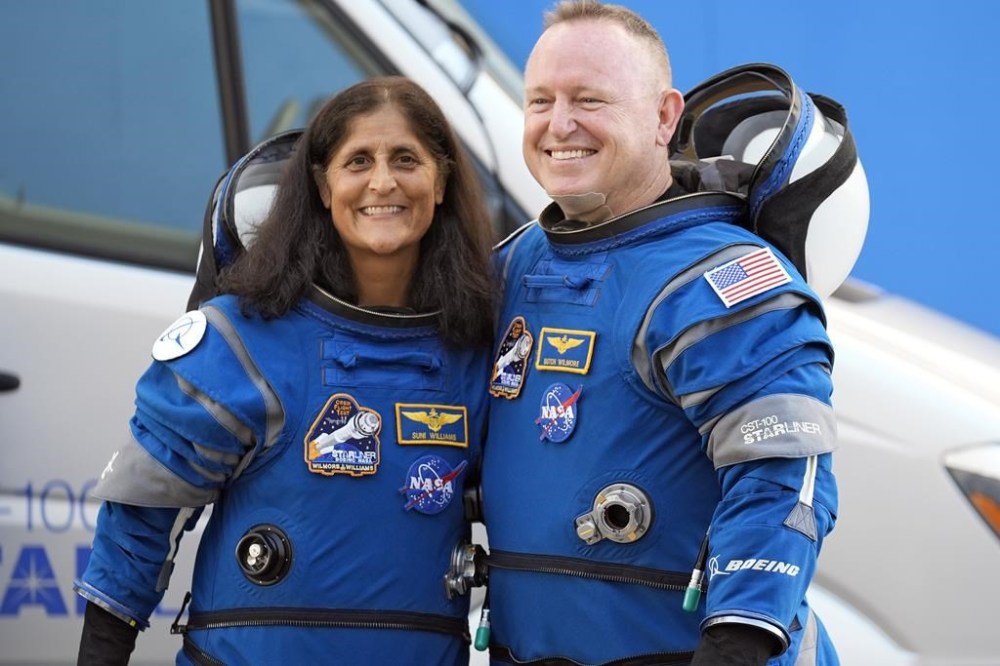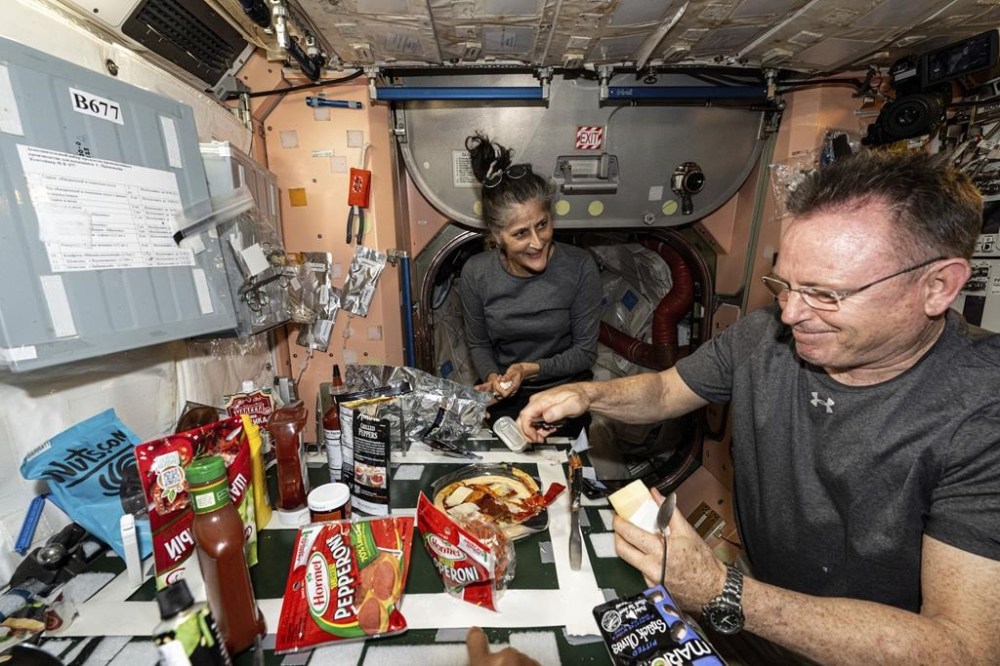NASA’s stuck astronauts hit 6 months in space. Just 2 more to go
Advertisement
Read this article for free:
or
Already have an account? Log in here »
To continue reading, please subscribe:
Monthly Digital Subscription
$0 for the first 4 weeks*
- Enjoy unlimited reading on winnipegfreepress.com
- Read the E-Edition, our digital replica newspaper
- Access News Break, our award-winning app
- Play interactive puzzles
*No charge for 4 weeks then price increases to the regular rate of $19.00 plus GST every four weeks. Offer available to new and qualified returning subscribers only. Cancel any time.
Monthly Digital Subscription
$4.75/week*
- Enjoy unlimited reading on winnipegfreepress.com
- Read the E-Edition, our digital replica newspaper
- Access News Break, our award-winning app
- Play interactive puzzles
*Billed as $19 plus GST every four weeks. Cancel any time.
To continue reading, please subscribe:
Add Free Press access to your Brandon Sun subscription for only an additional
$1 for the first 4 weeks*
*Your next subscription payment will increase by $1.00 and you will be charged $16.99 plus GST for four weeks. After four weeks, your payment will increase to $23.99 plus GST every four weeks.
Read unlimited articles for free today:
or
Already have an account? Log in here »
Hey there, time traveller!
This article was published 05/12/2024 (380 days ago), so information in it may no longer be current.
CAPE CANAVERAL, Fla. (AP) — Known across the globe as the stuck astronauts, Butch Wilmore and Suni Williams hit the six-month mark in space Thursday with two more to go.
The pair rocketed into orbit on June 5, the first to ride Boeing’s new Starliner crew capsule on what was supposed to be a weeklong test flight. They arrived at the International Space Station the next day, only after overcoming a cascade of thruster failures and helium leaks. NASA deemed the capsule too risky for a return flight, so it will be February before their long and trying mission comes to a close.
While NASA managers bristle at calling them stuck or stranded, the two retired Navy captains shrug off the description of their plight. They insist they’re fine and accepting of their fate. Wilmore views it as a detour of sorts: “We’re just on a different path.”

“I like everything about being up here,” Williams told students Wednesday from an elementary school named for her in Needham, Massachusetts, her hometown. “Just living in space is super fun.”
Both astronauts have lived up there before so they quickly became full-fledged members of the crew, helping with science experiments and chores like fixing a broken toilet, vacuuming the air vents and watering the plants. Williams took over as station commander in September.
“Mindset does go a long way,” Wilmore said in response to a question from Nashville first-graders in October. He’s from Mount Juliet, Tennessee. “I don’t look at these situations in life as being downers.”
Boeing flew its Starliner capsule home empty in September, and NASA moved Wilmore and Williams to a SpaceX flight not due back until late February. Two other astronauts were bumped to make room and to keep to a six-month schedule for crew rotations.
Like other station crews, Wilmore and Williams trained for spacewalks and any unexpected situations that might arise.
“When the crews go up, they know they could be there for up to a year,” said NASA Associate Administrator Jim Free.
NASA astronaut Frank Rubio found that out the hard way when the Russian Space Agency had to rush up a replacement capsule for him and two cosmonauts in 2023, pushing their six-month mission to just past a year.
Boeing said this week that input from Wilmore and Williams has been “invaluable” in the ongoing inquiry of what went wrong. The company said in a statement that it is preparing for Starliner’s next flight but declined comment on when it might launch again.
NASA also has high praise for the pair.
“Whether it was luck or whether it was selection, they were great folks to have for this mission,” NASA’s chief health and medical officer, Dr. JD Polk, said during an interview with The Associated Press.
On top of everything else, Williams, 59, has had to deal with “rumors,” as she calls them, of serious weight loss. She insists her weight is the same as it was on launch day, which Polk confirms.
During Wednesday’s student chat, Williams said she didn’t have much of an appetite when she first arrived in space. But now she’s “super hungry” and eating three meals a day plus snacks, while logging the required two hours of daily exercise.

Williams, a distance runner, uses the space station treadmill to support races in her home state. She competed in Cape Cod’s 7-mile Falmouth Road Race in August. She ran the 2007 Boston Marathon up there as well.
She has a New England Patriots shirt with her for game days, as well as a Red Sox spring training shirt.
“Hopefully I’ll be home before that happens — but you never know,” she said in November. Husband Michael Williams, a retired federal marshal and former Navy aviator, is caring for their dogs back home in Houston.
As for Wilmore, 61, he’s missing his younger daughter’s senior year in high school and his older daughter’s theater productions in college.
“We can’t deny that being unexpectedly separated, especially during the holidays when the entire family gets together, brings increased yearnings to share the time and events together,” his wife, Deanna Wilmore, told the AP in a text this week. Her husband “has it worse than us” since he’s confined to the space station and can only connect via video for short periods.
“We are certainly looking forward to February!!” she wrote.
___
The Associated Press Health and Science Department receives support from the Howard Hughes Medical Institute’s Science and Educational Media Group. The AP is solely responsible for all content.

